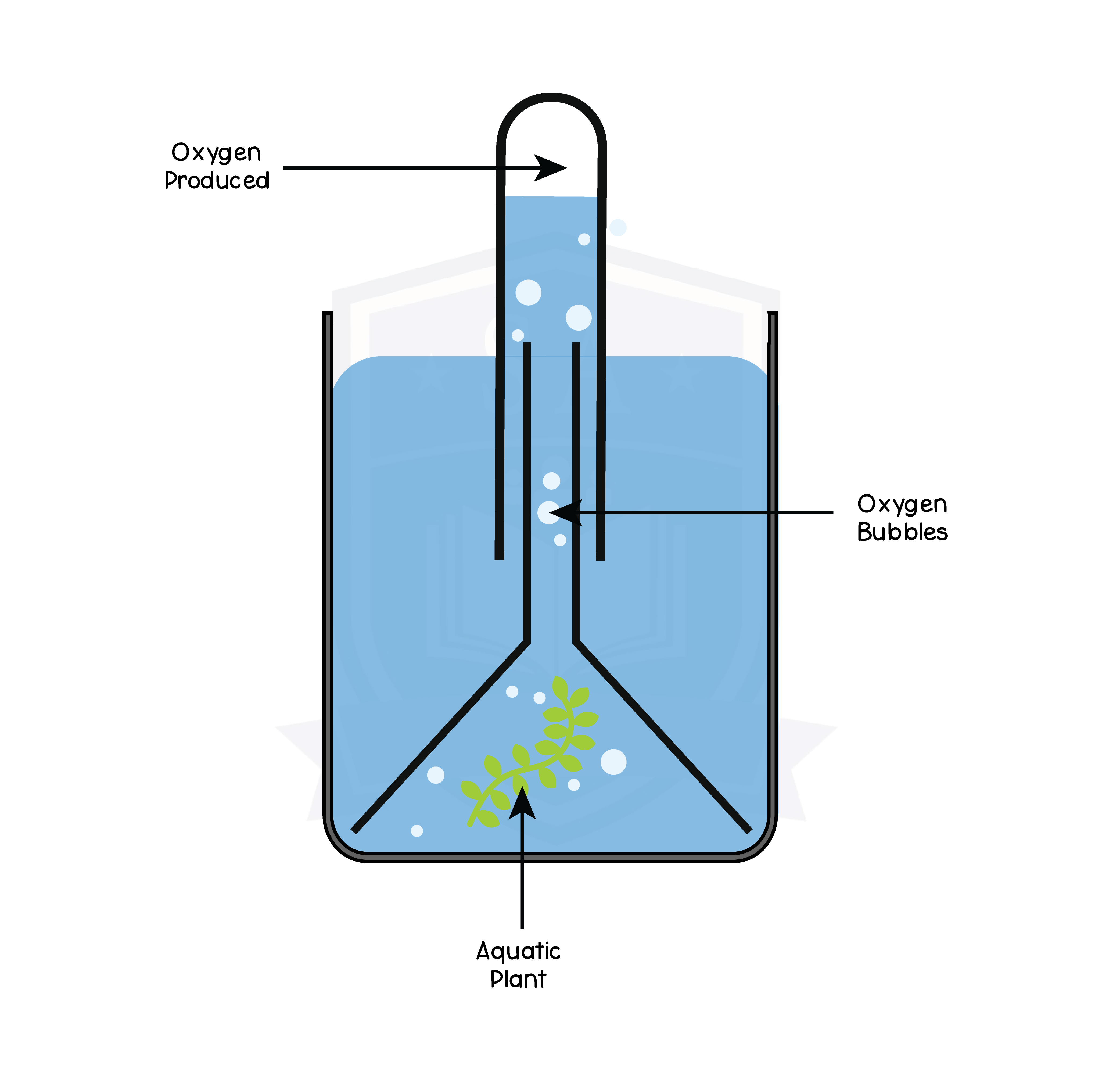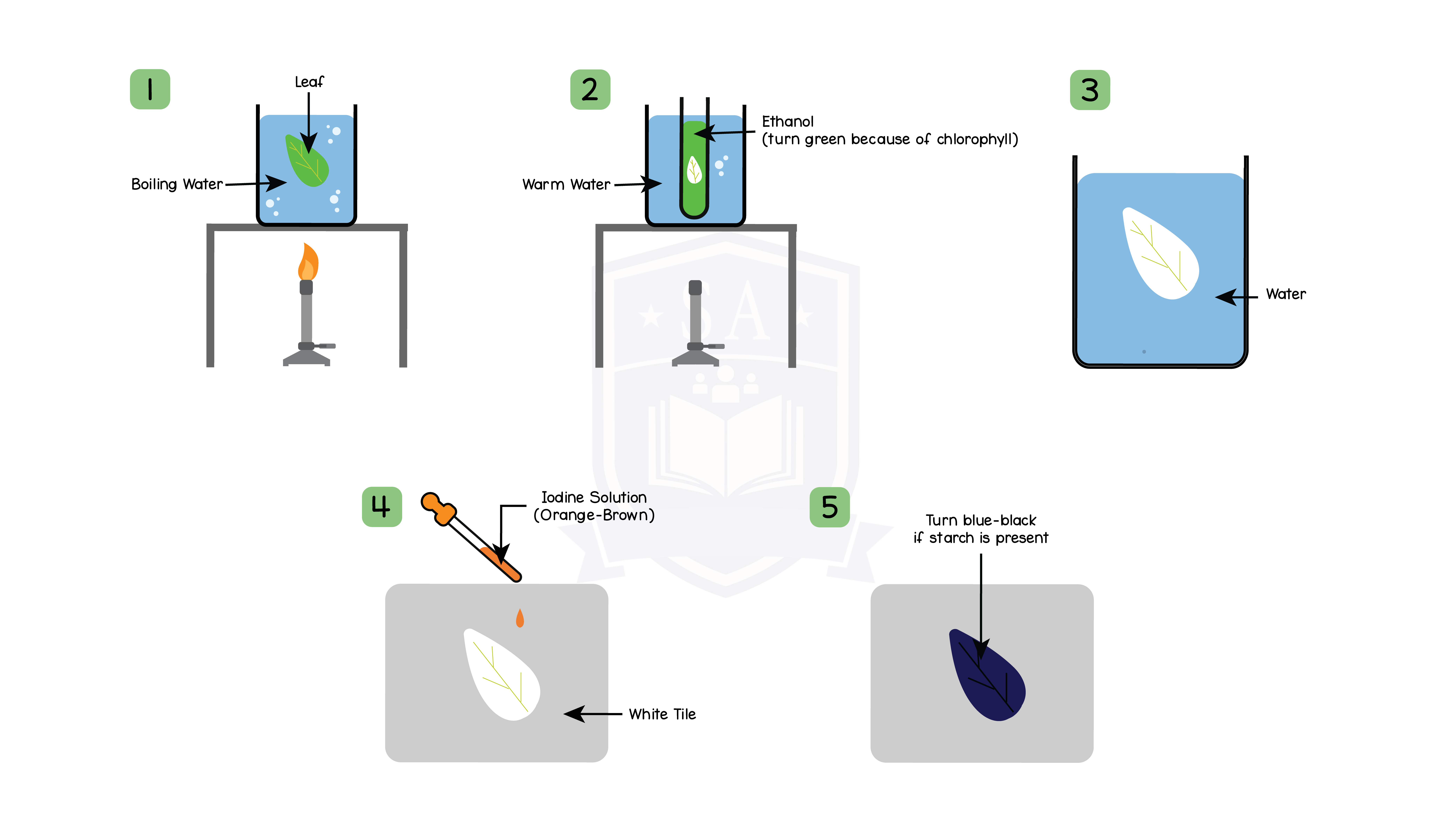REVISION NOTES
IGCSE Edexcel Biology
2.5 Nutrition (in Plants)
2.5.1 Understand the process of photosynthesis and its importance in the conversion of light energy to chemical energy
Photosynthesis:
- Endothermic reaction
- Occurs in the chloroplast
- Require energy from sunlight to convert CO2 and H2O into glucose
- By product is oxygen
Importance of photosynthesis:
- Produces glucose
- Uses of glucose:
- Production of starch
- Conversion into lipids
- Conversion into sucrose
- Production of cellulose
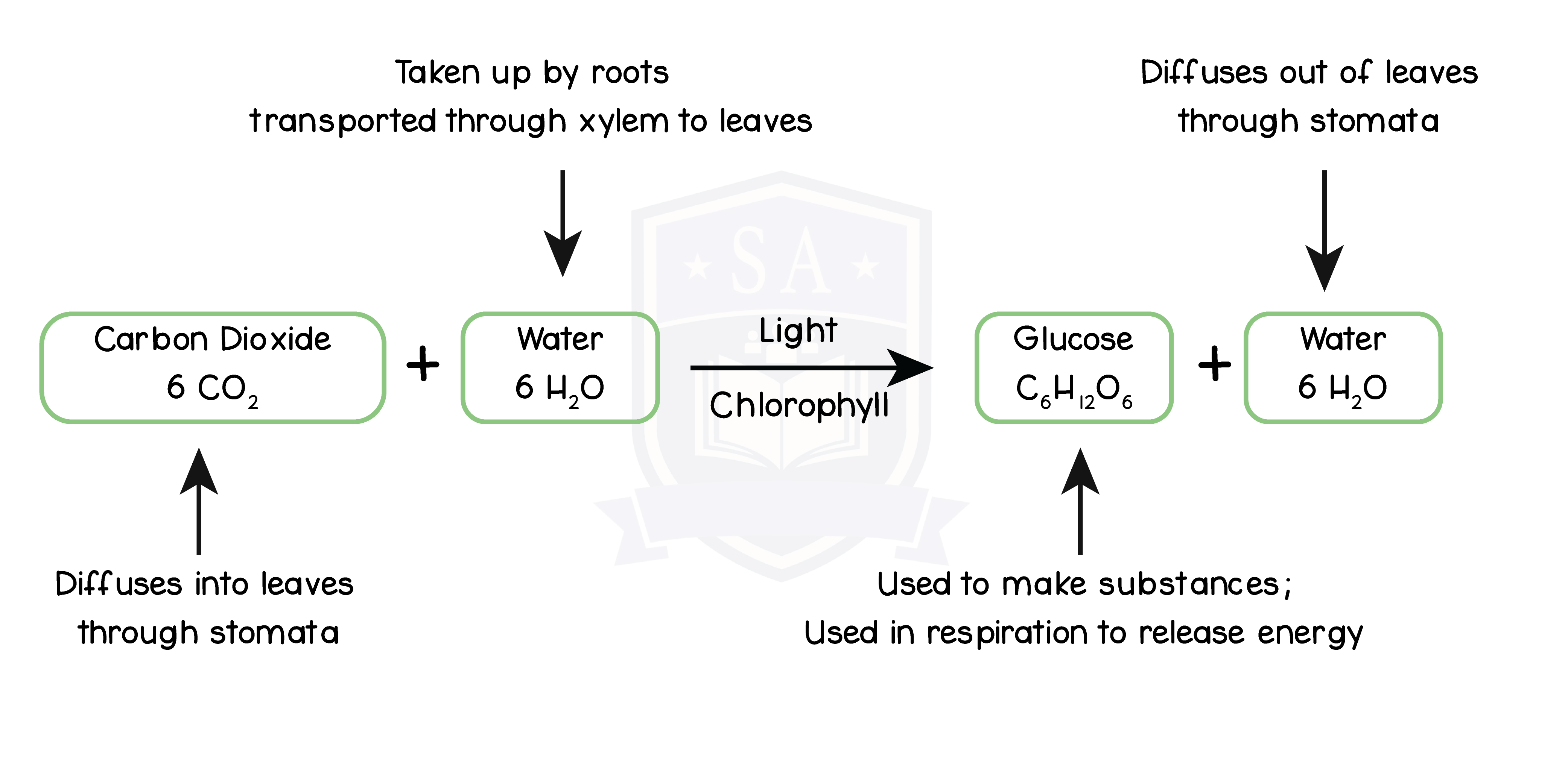
2.5.2 Know the word equation and the balanced chemical symbol equation for photosynthesis

2.5.3 Understand how varying carbon dioxide concentration, light intensity and temperature affect the rate of photosynthesis
Effect of CO2 concentration:
- The more CO2 present, the faster the rate of photosynthesis
- This trend continues unless another limiting factor is low in supply
Effect of light intensity:
- As light intensity increases, rate of photosynthesis increases
- Increasing intensity increases energy available for photosynthesis
- Light intensity is inversely proportional to distance between light and plant
- This trend continues unless another limiting factor is low in supply
Effect of temperature:
- Towards optimum:
- Increasing temperature increases kinetic energy
- Increases successful collisions between the reactants and enzymes
- Increases the rate of photosynthesis
- Above optimum:
- Enzymes start to denature
- Rate of reaction decreases
- Below optimum:
- Less kinetic energy in enzymes and molecules
- Successful collision rate decreases
- Photosynthesis rate decreases
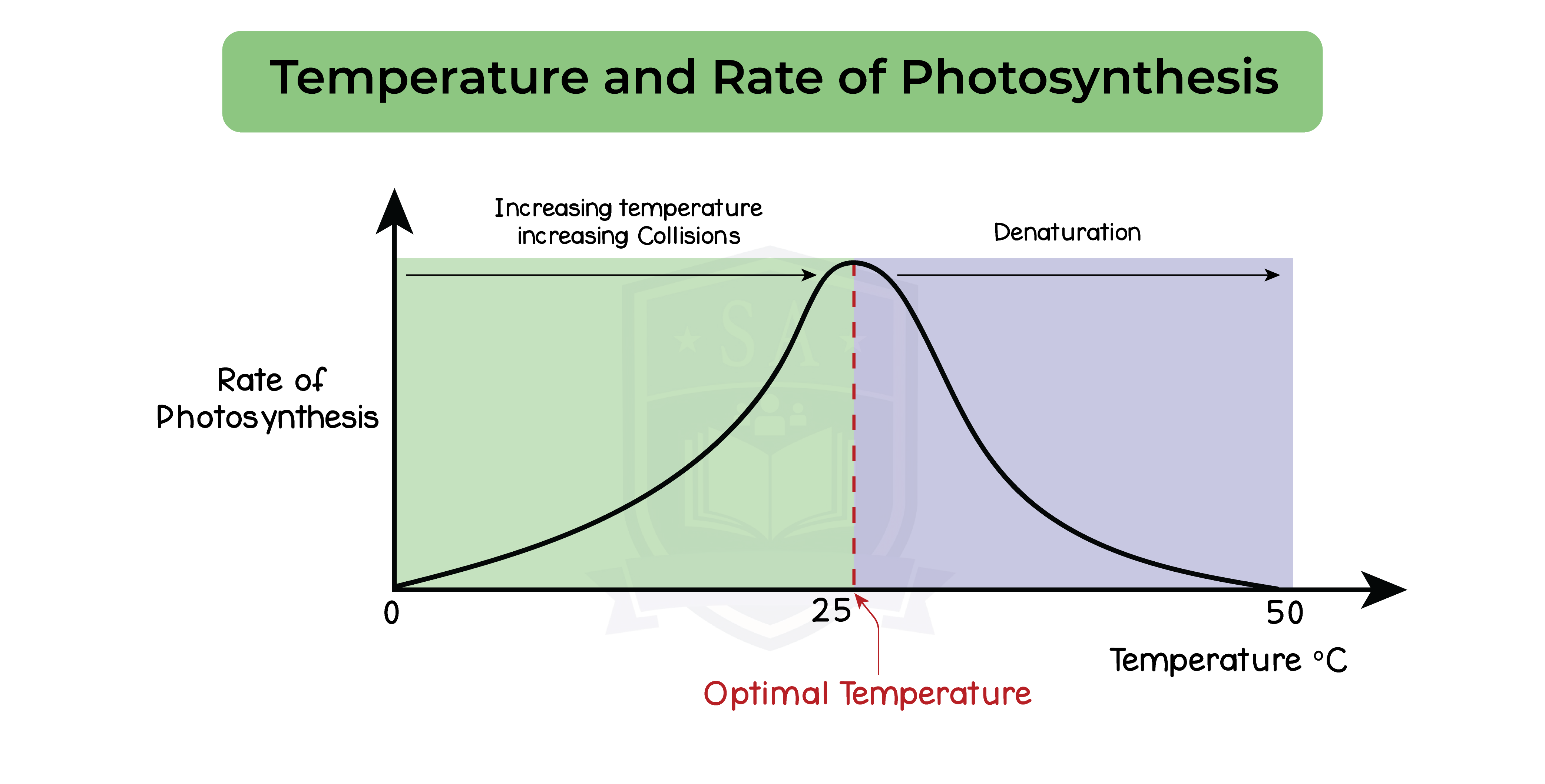
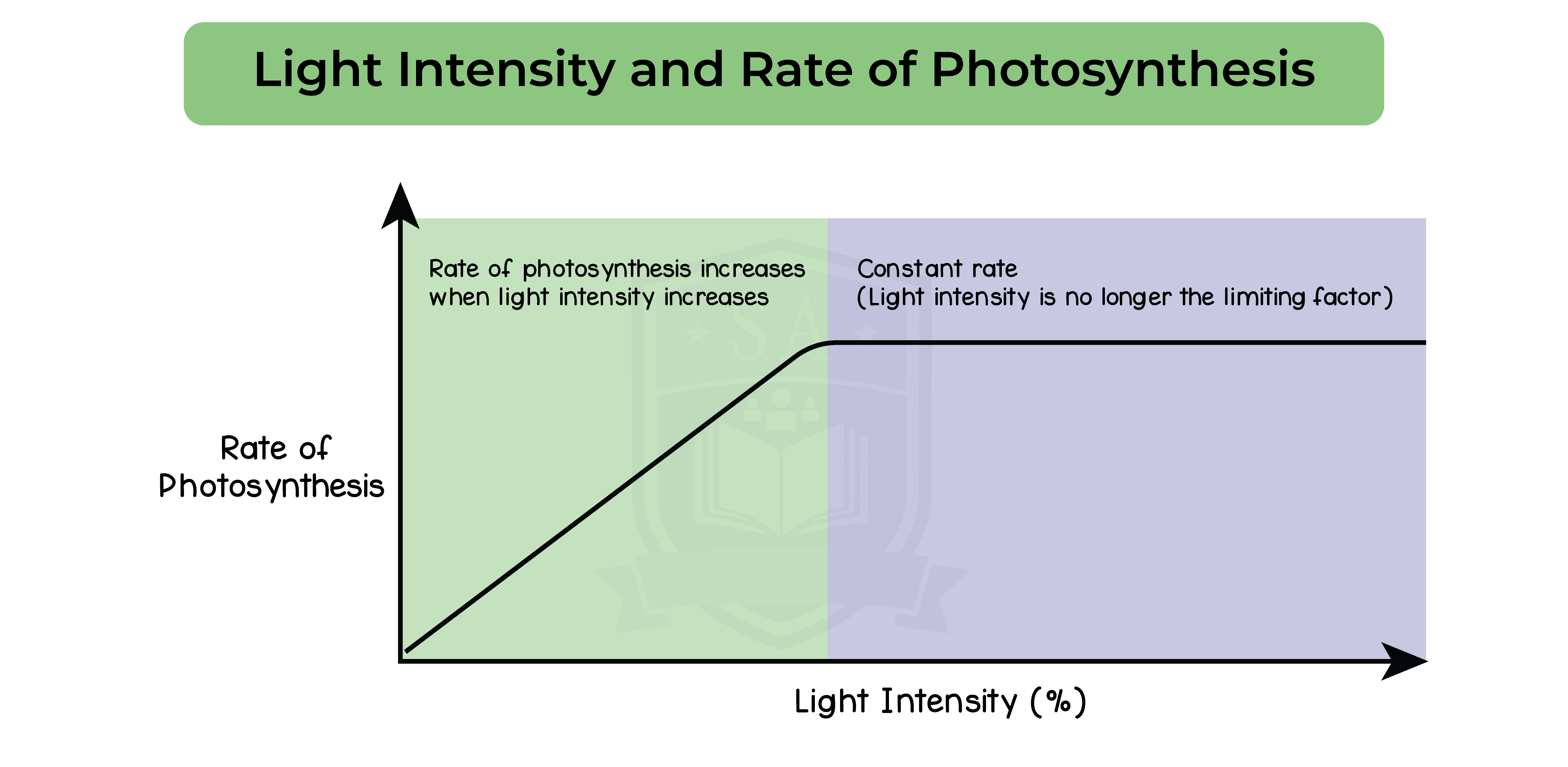
2.5.4 Describe the structure of the leaf and explain how it is adapted for photosynthesis
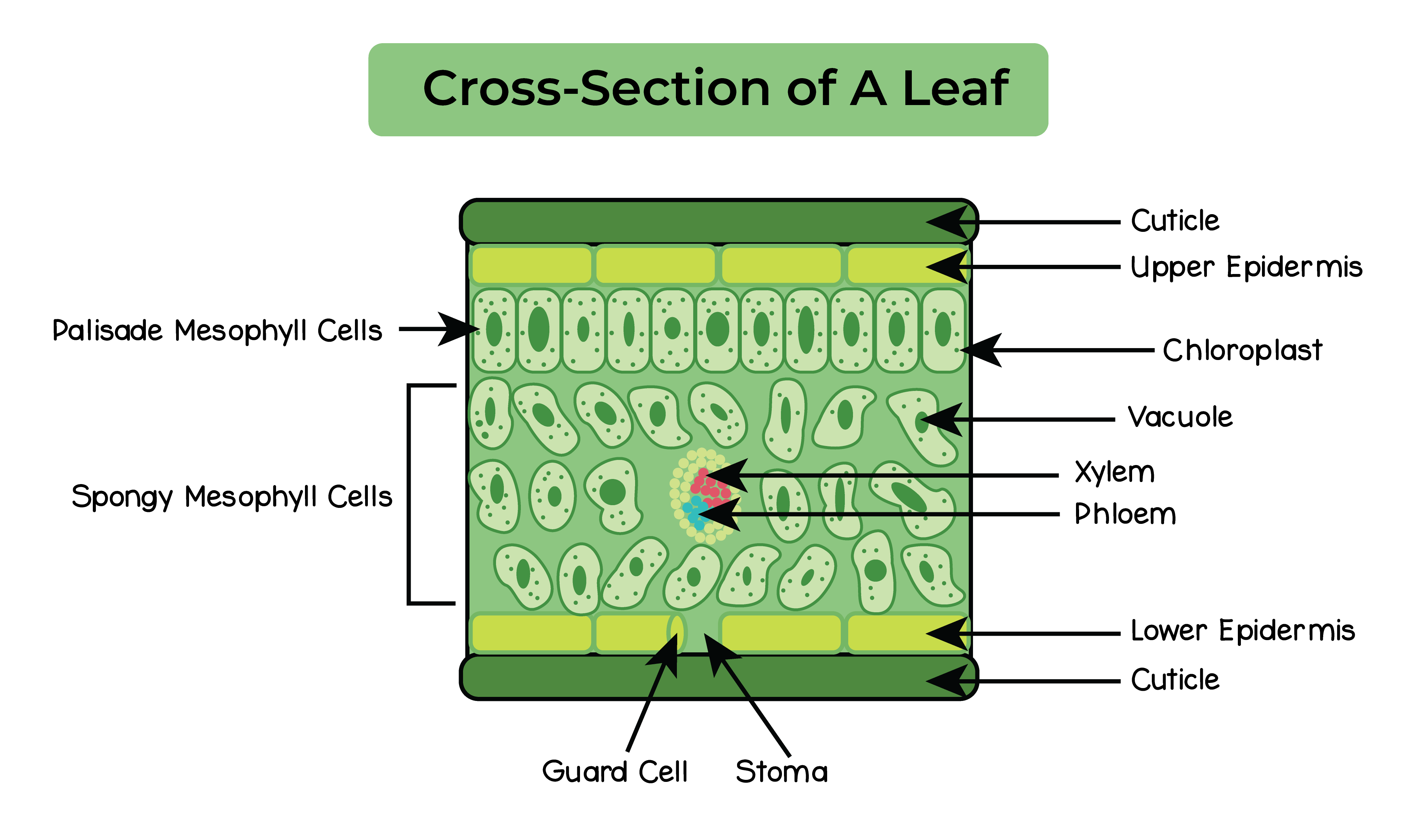
2.5.5 Understand that plants require mineral ions for growth, and that magnesium ions are needed for chlorophyll and nitrate ions are needed for amino acids
Magnesium
- Absorbed from the soil by root hair cells
- Required to make chlorophyll
- Causes chlorosis
- Veins of leaves start turning yellow
Nitrate
- Absorbed from the soil by root hair cells
- Required to make proteins
- Nitrogenous component of amino acids
Causes leaves to turn yellow and stunted growth
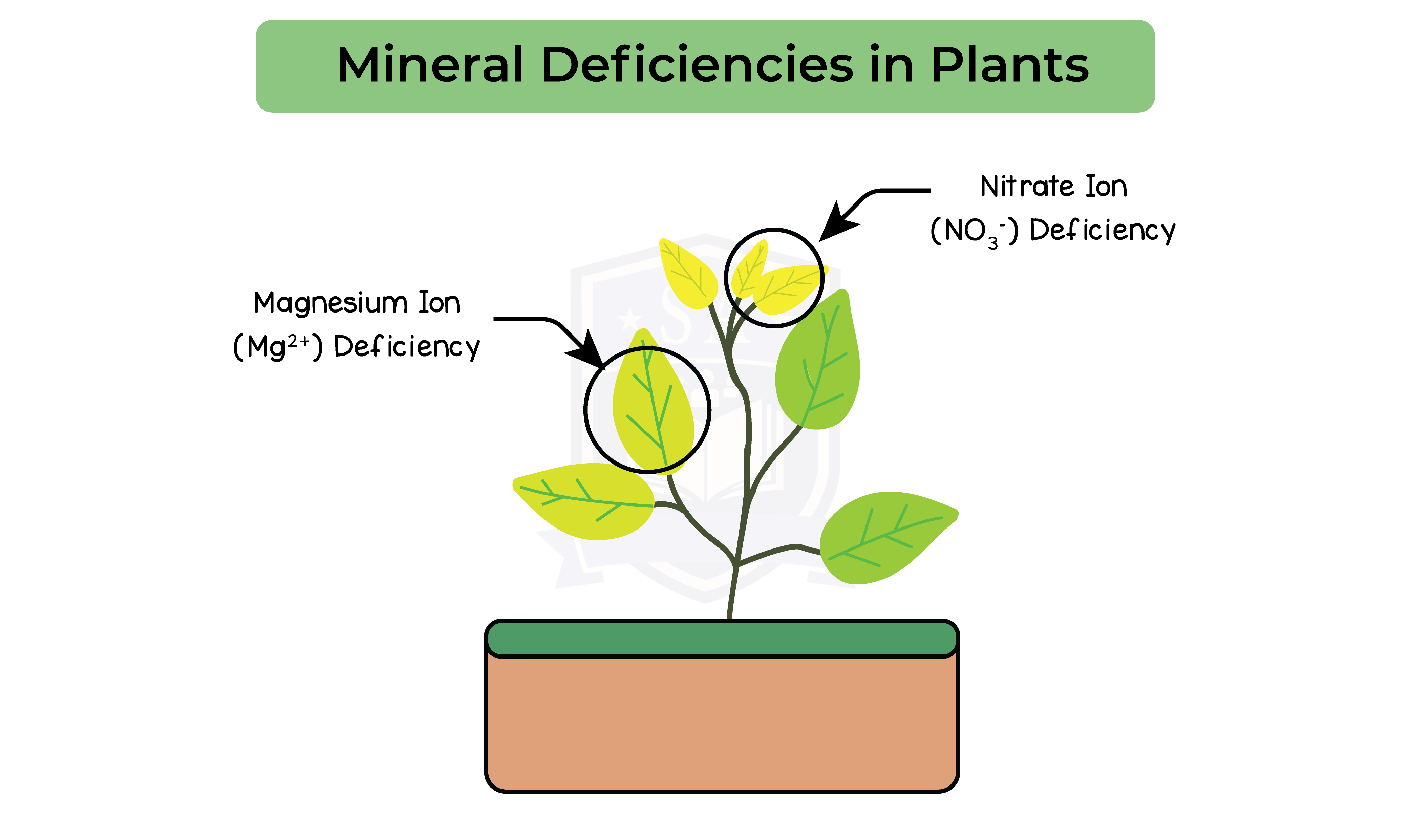

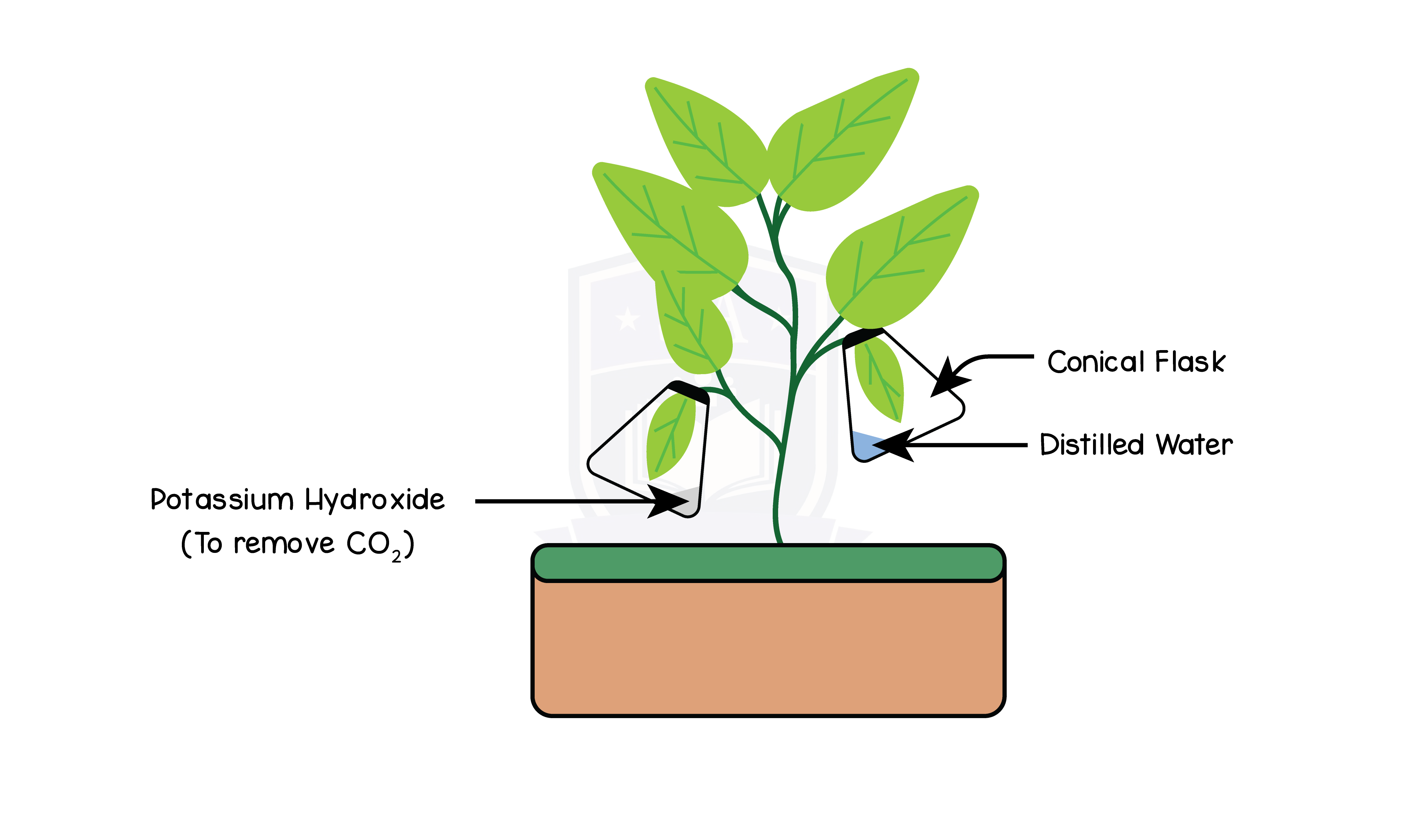
2.5.6 Practical: investigate photosynthesis, showing the evolution of oxygen from a water plant, the production of starch and the requirements of light, carbon dioxide and chlorophyll
Evolution of oxygen practical:
- Submerge a bundle of shoots of a water plant in a beaker of water under an unturned funnel
- Add a boiling tube with water over the end of the funnel
- Oxygen is produced as a by product of photosynthesis
- The gas bubbles will collect in the boiling tube to displace the water
Evolution of oxygen explanation:
- Demonstrates process of photosynthesis in water plants such as Elodea or Camboba (pondweed)
- Oxygen is a by-product of photosynthesis
- In water, oxygen released is observed as bubbles
- Confirm that the gas collected is oxygen
- A splint previously put out can be inserted into the boiling tube
- In the presence of oxygen, it will light on fire again.
Requirement of light practical:
Method 1:
- Place a plant in the dark for 24 hours to use up the starch storage
- Place another plant under light for 24 hours
- Pluck a leaf from each plant
- Test the leaves of both plants for starch by adding a drop of iodine
Results:
- Iodine solution for the plant in darkness should remain orange/brown
- No sunlight could be absorbed
- Photosynthesis could not occur
- Iodine solution for the plant in sunlight should turn blue/black
- Received enough sunlight to photosynthesize
- Creates glucose that can replace the starch storage
Requirement of CO2 practical:
- Place 2 plants in the dark for 24 hours so that the starch storage gets used up
- Post destarching, cover 1 plant with a plastic bag containing KOH
- KOH absorbs the carbon dioxide in the surrounding environment
- Cover another plant with a plastic bag not containing anything to use as a control
- Place the plants in bright light for 8 hours
- Remove the coverings and test both plants for starch in the following manner:
- Put leaves from the plant in water at 90OC
- Transfer the leaves into hot ethanol for 10 mins
- Dip the leaves in a 90OC water bath again
- Spread the leaves on a white tile
- Add iodine solution to the leaves
- Observe the colour change
Results:
- Leaf surrounded by potassium hydroxide will remain orange/brown
- Photosynthesis should not occur due to the lack of carbon dioxide
- Leaf not surrounded by potassium hydroxide should turn blue/black
- It has all the raw materials required to photosynthesise
Requirement of chlorophyll practical:
- Put a variegated leaf (partially green and white) in water at 95oC
- Transfer the leaf into hot ethanol for 10 mins
- Dip the leaf in 95oC water
- Spread the leaf on a white tile and cover it with iodine solution
Results:
- Areas of the leaf that are white:
- Do not contain chlorophyll
- Remain orange/brown as no photosynthesis can occur
- No starch accumulated
- Areas of the leaf that are green:
- Contain chlorophyll
- Turn blue/black as photosynthesis would occur
- Accumulates starch
